Anxiety Therapy
Our anxiety therapists in Cincinnati and Indianapolis are ready to help.
We Can Help You With Anxiety
Fear and anxiety are a normal part of life. However, if you experience persistent and excessive anxiety that negatively impacts your life, you should get evaluated for an anxiety disorder. Fear, which is an emotional response to a perceived threat, sends danger signals to the brain leading to a surge of cognitive and physical symptoms that prep your body for fight or flight behavior. Anxiety is anticipation of future threats leading to cautious, avoidant, or hypervigilant behavior. Many anxiety disorders develop in childhood and persist into adulthood. This guide explains anxiety disorders and the treatments that can help you thrive.
Anxiety Disorders
Selective Mutism
- Failure to speak in specific social situations where speaking is expected even though individual can speak in other situations
Specific Phobia
- Intense fear or anxiety about a specific object or situation
- Avoidance of (or enduring with intense fear or anxiety) a specific object or situation
Social Anxiety
- Marked fear or anxiety about social situations that involve possible scrutiny
- Fear about negative evaluation due to anxiety symptoms
- Avoidance of social situations (or enduring with intense anxiety)
Panic Disorder
- Recurrent unexpected panic attacks with physical symptoms that peak within minutes
- Persistent worry about having more panic attacks
- Avoidance of situations that might trigger panic attacks
Agoraphobia
- Marked fear or anxiety about situations where escape might be difficult or help unavailable
- Avoidance of situations where escape might be difficult or help unavailable
Generalized Anxiety
- Excessive anxiety and worry (apprehensive expectation) about various events or activities
- Difficulty controlling worry
- Worry that leads to physical symptoms
Effective Treatments for Anxiety
Exposure Therapy
- Get support to gradually enter feared situations (in reality or in your imagination)
- Learn that you can tolerate the fear, that it will decrease on its own without avoiding, or that feared outcomes do not occur or aren’t as terrible as feared
Cognitive Behavioral Therapy
- Identify and challenge catastrophic thinking that triggers fear and anxiety
- Change your behaviors to decrease avoidance
- Face feared situations to learn new ways of coping
Panic Control Therapy
- Identify and challenge catastrophic thinking that triggers panic (especially thoughts related to bodily sensations)
- Exposure to feared situations and bodily sensations to learn new ways of coping
Applied Relaxation
- Learn progressive muscle relaxation that can be used during stressful situations
- Most often used in conjunction with other therapies
Acceptance and Commitment Therapy
- Learn to let go of the struggle against unwanted thoughts, emotions, and physical sensations to embrace acceptance
- Learn to focus on the present moment and act on what you value most
Take the Next Step with Support for Anxiety

We want to help you create an individualized roadmap (a ThriveMap!) to get CLEAR DIRECTION on how you can achieve your goals and overcome your challenges.
1
Understand the Problem
2
Choose Treatment Targets
3
Create an
Action Plan
Frequently Asked Questions About Anxiety Therapy
What is it like to work with our anxiety therapists in the Indianapolis and Cincinnati areas?
We believe the connection with your therapist and having clear guidance about the treatment and therapeutic process are critical for a great therapy experience, that’s why we promise our clients Remarkable Connection and Clear Direction. Your unique needs and expectations matter to us as we work together to help you accomplish your goals. Here’s a snapshot of the ThrivePointe experience.

1. Build a Strong Therapeutic Relationship
Team up with a therapist who strives to deeply understand your experience and expertly guide you through the process of making changes.

2. Understand the Problem
Develop a clear picture of your problem, including your personal history, symptoms, triggers, and the ways your life is impacted.

3. Create an Action Plan
Using evidence-based approaches, design an individualized plan to achieve your goals.

4. Implement New Skills & Solutions
Get the right balance of support and challenge to make life and relationship changes.

5. Track Your Progress To Do What Works
Make sure therapy is helping by monitoring improvements and refining your action plan.

6. Achieve Your Goals
Experience the Satisfaction of working hard to see positive changes and growth in your life!
When you experience anxiety and worry, it’s natural to feel uncomfortable and want to get rid of those feelings as quickly as possible! When unpleasant anxiety sensations pop up you might think things like, “Oh no! I shouldn’t feel this way! I have to make this stop! I can’t stand it!” Then worry kicks in to protect you from feeling this way again and a lot of energy goes into putting those thoughts, feelings, and sensations out of mind and find ways to distract or get reassurance. Unfortunately, that often creates a pattern of avoidance and distraction that leads to more anxiety and worry over time. Sarah helps clients learn to distinguish between worry that is helpful and worry that causes distress; noticing the difference between a signal to problem solve, prepare, or take action, versus a “worry without an action plan” cycle or fixation with gaining certainty and getting things just right. Sarah helps you make connections about what experiences, beliefs (like, “I can’t handle this!”), and patterns have contributed to persistent anxiety. You can gain insight about what’s happening, learn about the cycle of anxiety, and explore new ways of moving through these feelings so you feel more peace and resilience over time.
What does anxiety counseling look like?
Acceptance Based Behavioral Therapy (Roemer & Orsillo, 2020) helps clients break free from anxiety cycles and move toward a mindful, compassionate, and accepting experience that reduces distress.
- Learn about fear and anxiety and track your own worry cycle.
- Learn about the function of emotions.
- Practice formal and informal mindfulness, defusion (or getting unhooked from unhelpful thoughts), and self-compassion to cultivate a compassionate and balanced stance toward your internal experiences.
- Learn how to “score a point against anxiety” by increasing acceptance of the things outside your control.
- Create a fear and avoidance hierarchy.
- Practice acceptance with exposure; select the situations or thoughts you are most motivated to work on from your hierarchy.
- Identify the ways anxiety has interfered with your life, goals, and dreams.
- Pinpoint your values and the values-driven actions that are meaningful to you.
- Make plans each week to engage in values-driven actions and notice the benefits of the healthy actions you were able to engage in!
Want to Learn More About Anxiety Therapy
in Ohio or Indiana?
We want to make finding anxiety counseling in Cincinnati and Indianapolis easy.
To get started with an anxiety therapist, just follow these three steps:
- Find a therapist on our Team page.
- Call 833-914-4688 to make an appointment.
- Start making progress on your goals!
More ThrivePointe Counseling Services Near Cincinnati and Indianapolis
As a practice, we value treating the whole family’s needs. So, at our various ThrivePointe locations in Indianapolis, Greenwood, Blue Ash and Liberty Township, we can serve you. We provide adult counseling, couples counseling, child counseling and play therapy, teen counseling, family counseling and Christian counseling. Our team cares about you and wants to be a part of your thriving life. Learn more and call us today!

